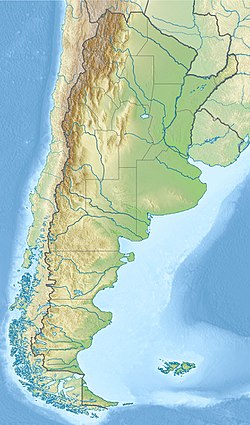| Cerro Fortaleza Formation | |
|---|---|
| Stratigraphic range: Campanian to Maastrichtian ~ | |
| Type | Geological formation |
| Underlies | La Irene Formation |
| Overlies | Anita Formation |
| Thickness | 460 m (1,510 ft) |
| Lithology | |
| Primary | Sandstone |
| Location | |
| Coordinates | 49°54′S72°06′W / 49.9°S 72.1°W |
| Approximate paleocoordinates | 51°54′S61°48′W / 51.9°S 61.8°W |
| Region | Santa Cruz Province, southern Patagonia |
| Country | Argentina |
| Extent | Austral Basin |
The Cerro Fortaleza Formation, in older literature described as Pari Aike Formation, is a Late Cretaceous geologic formation of Campanian to Maastrichtian age [1] [2] (although it has formerly been reported to be Cenomanian to Santonian) [3] of the Austral Basin in southern Patagonia, Argentina.





